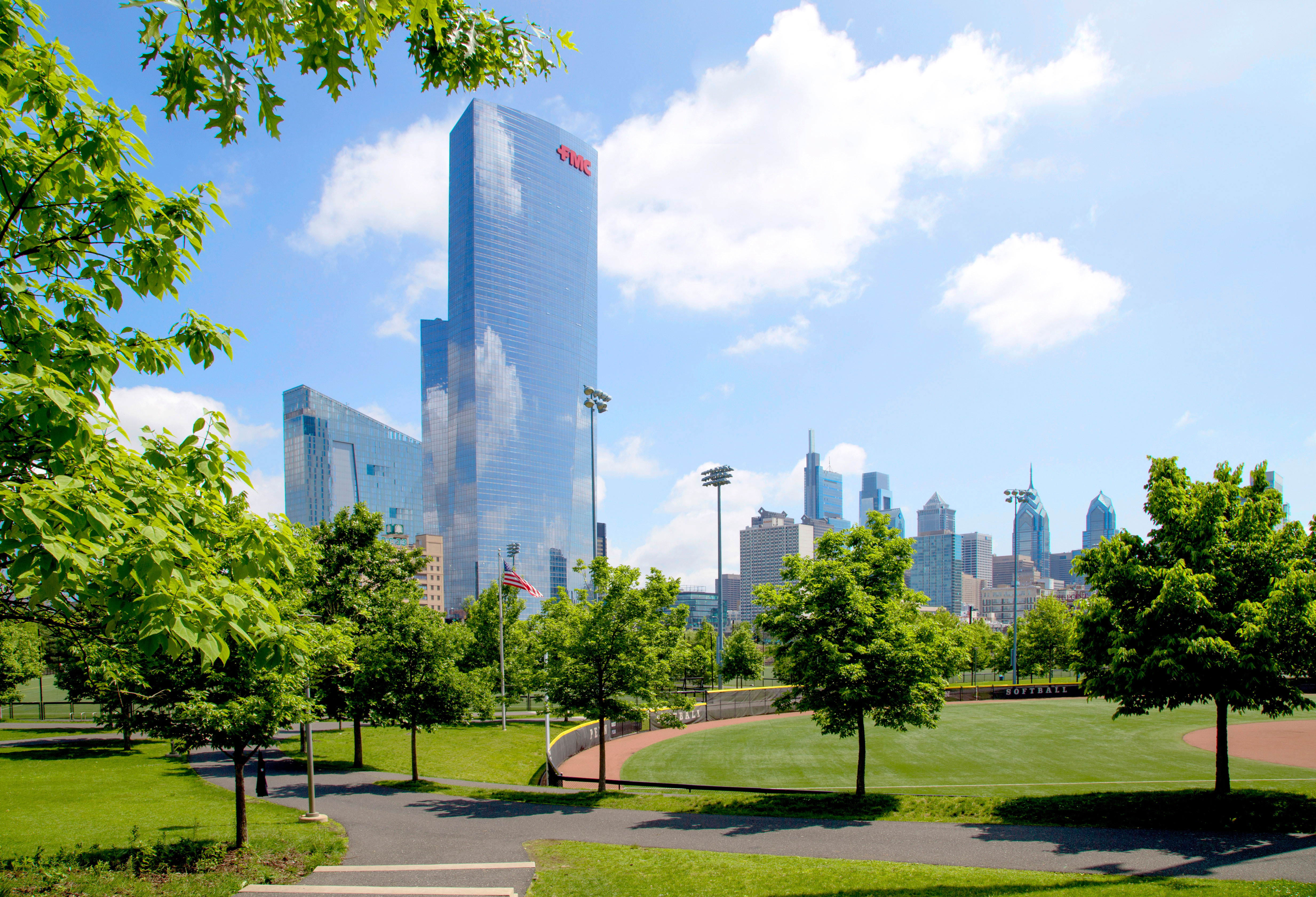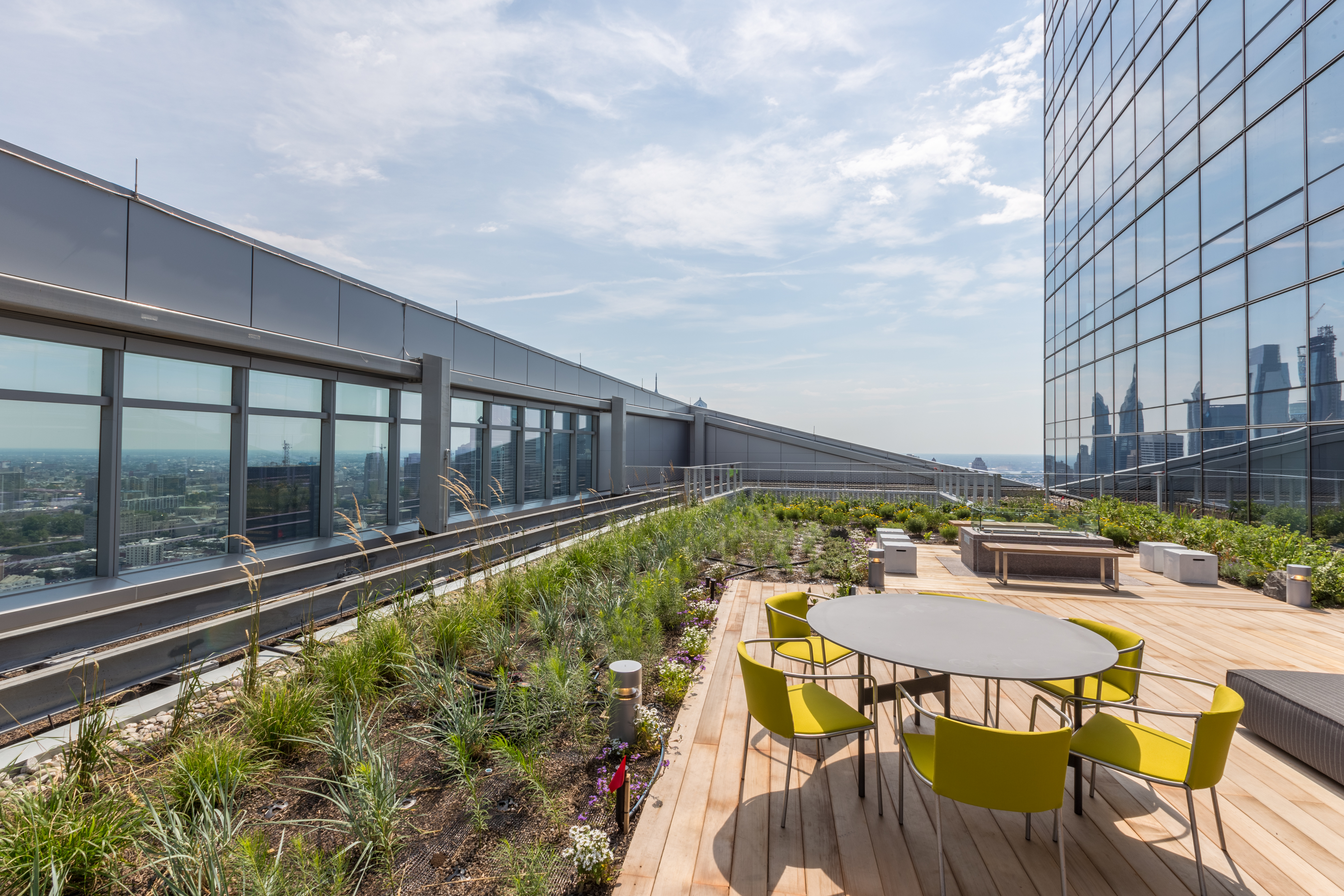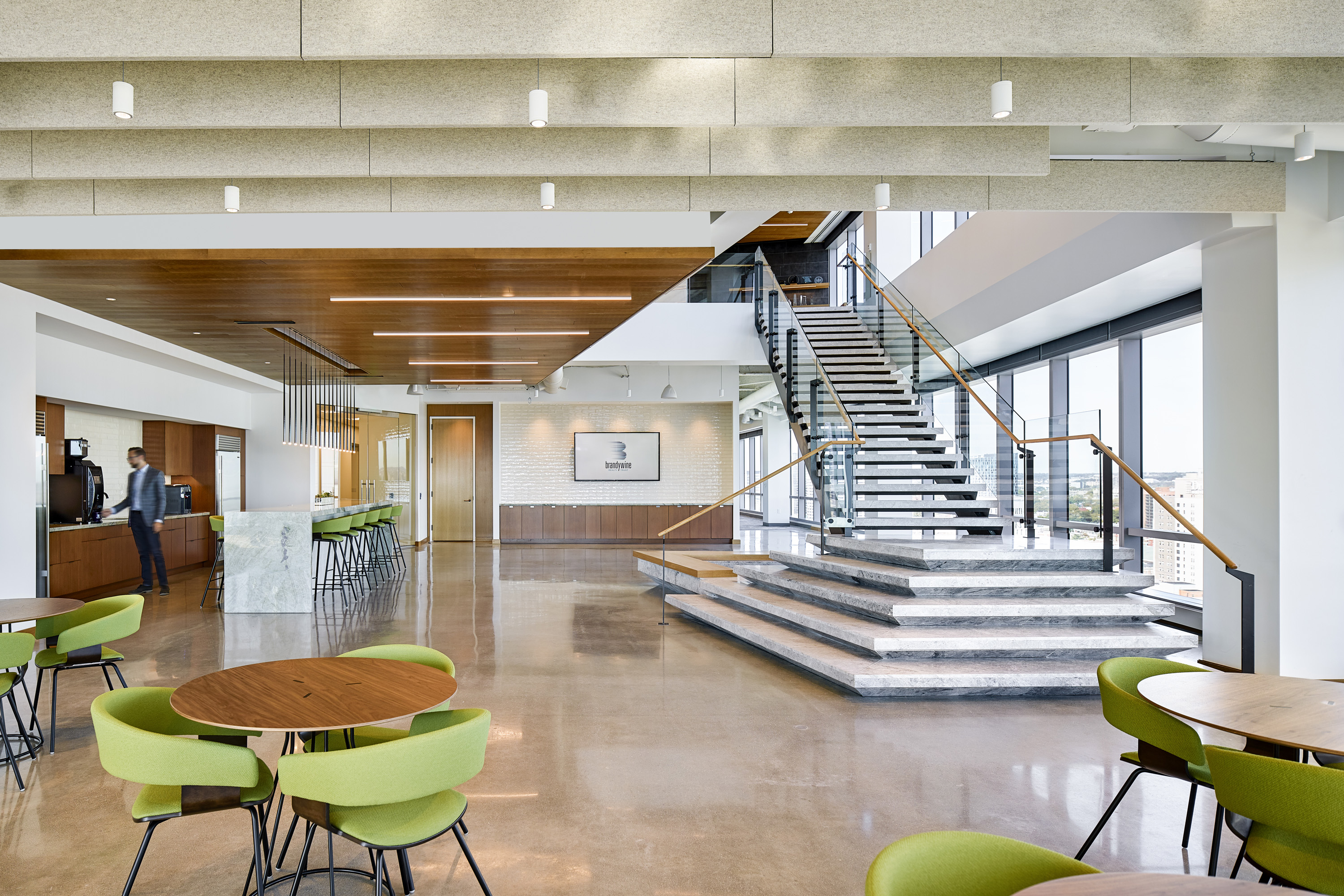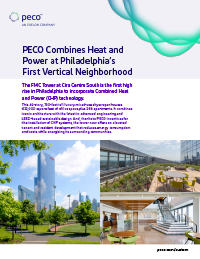The FMC Tower at Cira Centre South is the first high rise in Philadelphia to incorporate Combined Heat and Power (CHP) technology.
This 49-story, 730-foot tall luxury mixed-use skyscraper houses 622,000 square feet of office space plus 268 apartments. It combines iconic architecture with the latest in advanced engineering and LEED-based sustainable design. And, thanks to PECO incentives for the installation of CHP systems, the tower now offers an elevated tenant and resident development that reduces energy consumption and costs while energizing its surrounding communities.
CHP is a clean and efficient approach to generate electrical and thermal energy from a single fuel source. Typical CHP systems are located close to the commercial building, campus or industrial process they serve. They provide at least a portion of the facility’s electrical load. Importantly, they capture thermal energy from hot exhaust gasses for use in space heating, cooling, domestic hot water, dehumidification and process heating. Finally, CHP systems improve a facility’s operational efficiency, cut energy costs and reduce emissions.
CHP uses captured thermal energy from exhaust gasses for space heating, cooling, domestic hot water, dehumidification and process heating. This clean and efficient technology generates electrical and thermal energy from a single fuel source.
Typical CHP systems
Depending on the technology and system design, CHP systems can be
up to 80% efficient, according to the EPA.1 To accomplish its CHP goals, the FMC Tower at Cira Centre South installed two 65 kW microturbines to provide an annual utility savings of over $138,000 and corresponding carbon reduction.
In January 2017, FMC Tower received LEED Gold certification for its commercial interior. The certification, awarded to buildings and spaces that operate in a sustainable manner, demonstrates FMC’s continuing commitment to sustainability.
CHP offers economic benefits and improved reliability
Because CHP systems capture waste heat associated with electricity production, less fuel is needed for a given unit of energy output. And because CHP systems typically use natural gas, which is often cheaper than purchased electricity, electric bills may be reduced further.
Outages and interruptions of grid-supplied electricity happen, and when they do it can represent a quantifiable business, safety and health risk depending on your facility type. CHP systems can be designed to operate during these events, supplying continuous power for critical functions. Incorporating this technology into your strategy to reduce business risk can provide reliable power for facility operations.



